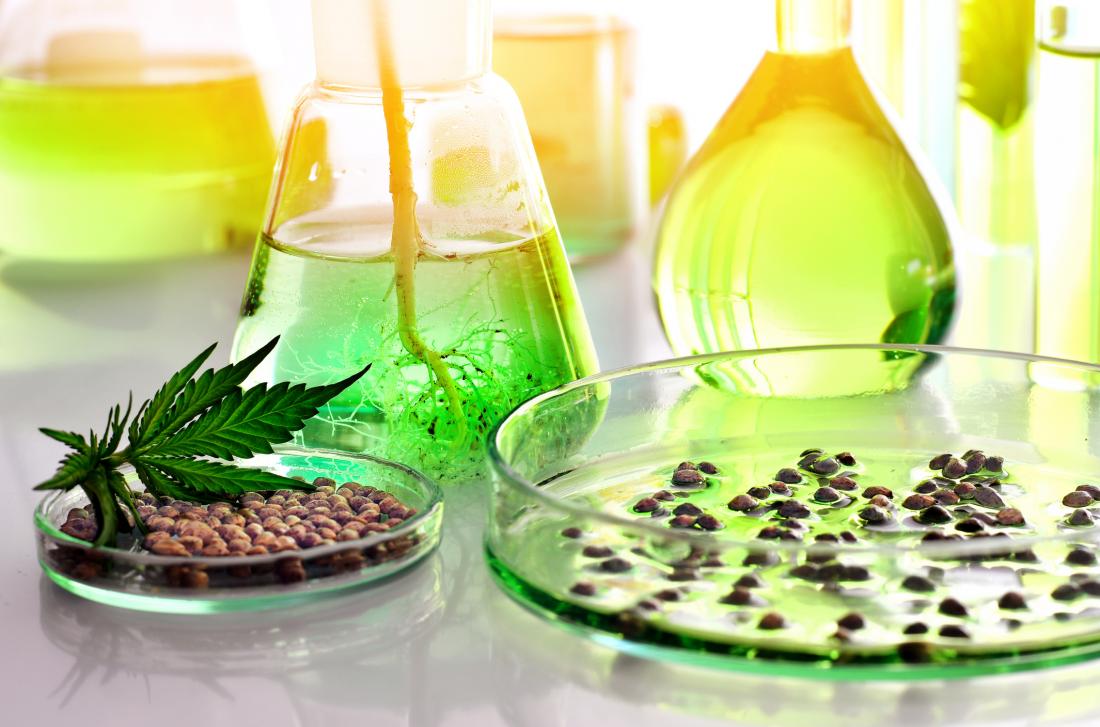
Opioids work by attaching themselves to nerve cell receptors in various parts of the body, blocking pain signals that are traveling to the brain.
Although effective, the downside of opioids is the risk of addiction — especially when a person takes them for an extended period.
More than 130 people in the United States die of an opioid overdose each day, according to the National Institute on Drug Abuse. The problem is so severe that officials have labeled it as a public health crisis.
"There's clearly a need to develop alternatives for relief of acute and chronic pain that go beyond opioids," says Prof. Tariq Akhtar, from the department of molecular and cellular biology at the University of Guelph in Ontario, Canada.
According to Prof. Akhtar and other researchers at the university, cannabis could be the key.
Ideal pain relievers
In the 1980s, scientists identified two cannabis molecules: cannflavin A and cannflavin B. "These molecules are nonpsychoactive, and they target the inflammation at the source, making them ideal painkillers," explains Prof. Akhtar.In fact, research found that flavonoids, as the molecules are now known, are almost 30 times better at reducing inflammation than aspirin.
But, due to regulatory laws, researchers made little progress in figuring out how the cannabis plant makes flavonoids. Until now, that is.
Cannabis use has now become normalized and even legal in some places, including Canada.
The University of Guelph team used this change of situation to delve into the molecule-making process.
"Our objective was to better understand how these molecules are made, which is a relatively straightforward exercise these days," says Prof. Akhtar.
"There are many sequenced genomes that are publicly available, including the genome of Cannabis sativa, which can be mined for information. If you know what you're looking for, one can bring genes to life, so to speak, and piece together how molecules like cannflavins A and B are assembled."
Creating bigger batches
Using biochemistry methods, the team was able to determine the plant genes necessary to produce the two molecules.They also identified the precise steps that resulted in flavonoid production, publishing them in Phytochemistry.
However, this research alone is not enough to create a new natural pain reliever. "The problem with these molecules is they are present in cannabis at such low levels, it's not feasible to try to engineer the cannabis plant to create more of these substances," states Prof. Steven Rothstein, also from the molecular and cellular biology department.
Consequently, the researchers are teaming up with cannabis company Anahit International Corp. in the hope of finding a way to "engineer large quantities" of flavonoids.
"Anahit looks forward to working closely with University of Guelph researchers to develop effective and safe anti-inflammatory medicines from cannabis phytochemicals that would provide an alternative to nonsteroidal anti-inflammatory drugs," says Anahit's chief operating officer Darren Carrigan.
Eventually, the company plan to make this remedy available via a range of athletic and medical products, including sports drinks, pills, creams, and transdermal patches.
In itself, this will be an achievement. But, if the partnership is successful, the best part is that the pain relief will come without an addiction risk.
"Being able to offer a new pain relief option is exciting, and we are proud that our work has the potential to become a new tool in the pain relief arsenal."
Prof. Steven Rothstein

No comments:
Post a Comment